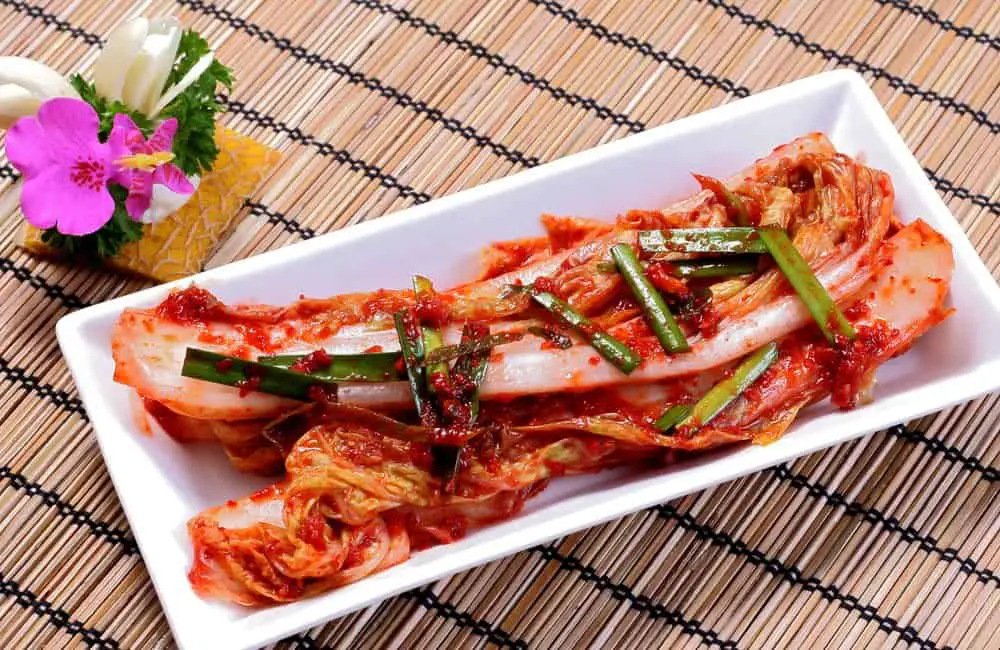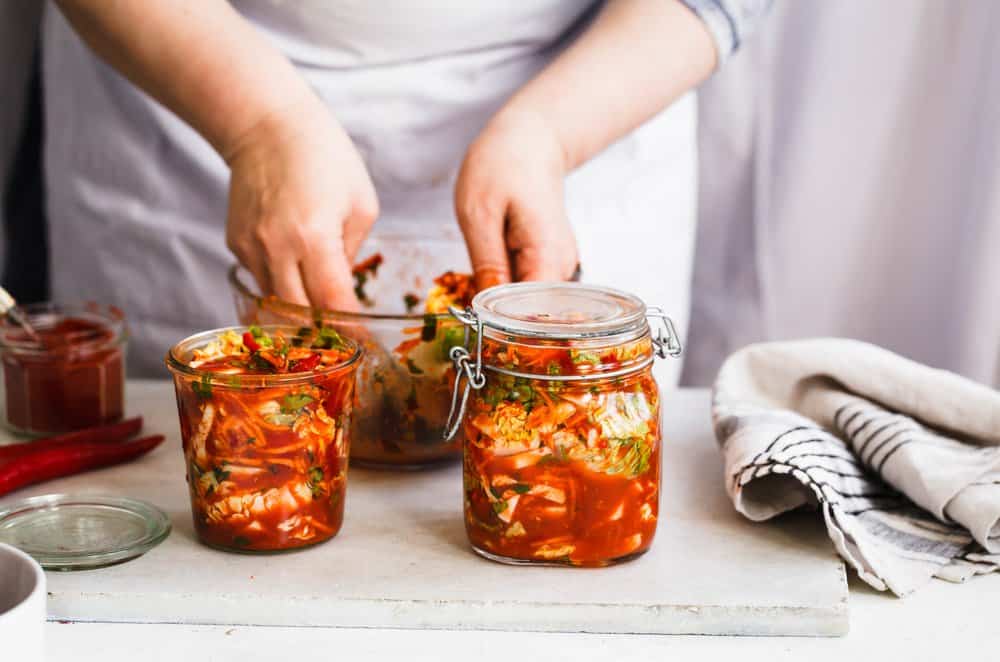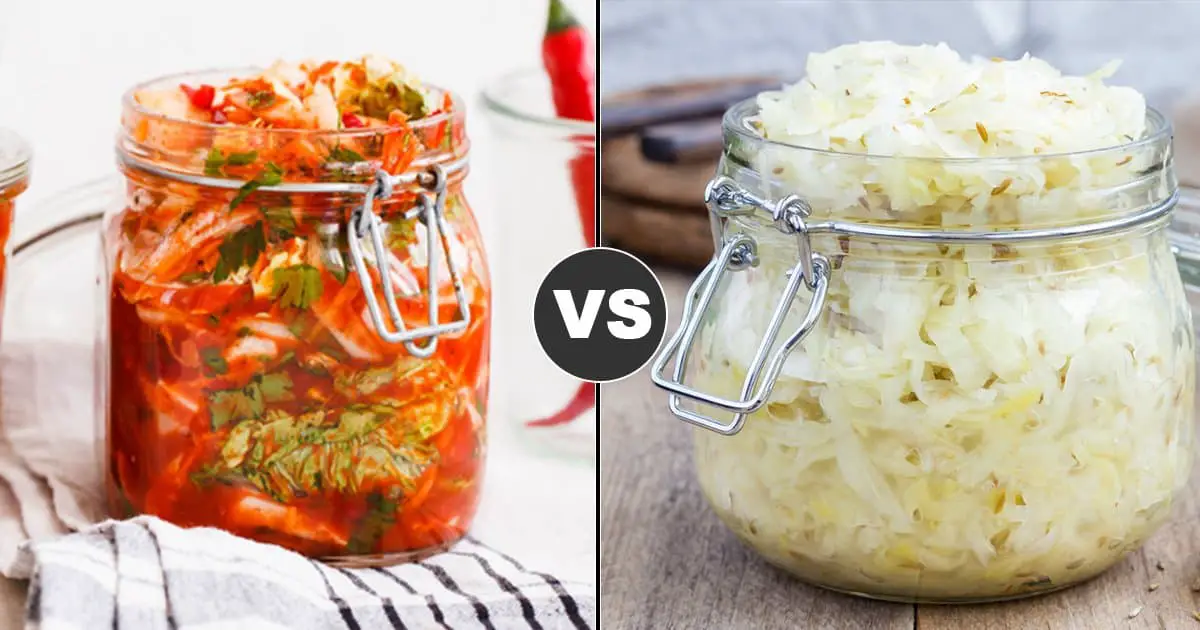As an avid adventurer and one who likes to take on new challenges, trying out dishes form different places in the world is always a welcome idea to try something fun and new. This article takes us to the country of Korea and with it one of their national dishes, Kimchi. You may have heard of it and have probably asked yourself, what does kimchi taste like? We have you covered in this article.
You can’t mention three things about Korea without mentioning kimchi and for some reasons probably related to health kimchi has become a personal favorite to many.
Although you might desire it, foods like kimchi are not prepared through normal cooking processes so you need to have basic understanding before trying it at home
If you have any reservations in your mind about the benefits of kimchi and the process through which it is made, read on to find out more.
What Is Kimchi

Kimchi is a dish which is of Korean descends. It is made through a fermentation process which takes some degree of time to attain.
It can be made using different vegetables although nape cabbage is mostly preferred to others.
Kimchi is very versatile and it has been adopted by different people and cultures to suit their preference, choice of vegetable and taste.

There are no laid down rules on ways that kimchi must be prepared although there are traditional recipes which are regarded as original but in all preparation processes, fermentation is key.
Although kimchi is generally seen as a dish for accompaniment with other dishes, it can be taken on its own any time of the day. Check out this article that has a collection of Korean Cookbooks to help you explore your different regions of the world.
How Did It Start?
Korea, just like the rest of some parts of the Asian continent have been known to experience very extreme climatic conditions and as a result of that, means have been sorted on how food can be adequately preserved during cold seasons, hence the preservation of vegetables by salting came about.

The initial kimchi dishes that were made by Korean natives were not inclusive of pepper and other spices like we have it presently, it was mainly Korean radish and salt as cabbage was not very common as at that time.
Native kimchi was made with clay pots and kept deep under the earth which worked very well in its preservation for future use.
The name kimchi is derived from a Korean word “chimchae” which means “brining of vegetables”
Health Benefits Of Kimchi.
For starters, let’s examine what it does for the cholesterol level, adequate consumption of kimchi has significant reduction impact on the level of cholesterol.

In a study carried out, it was deducted that people who ate some amount of kimchi daily experienced a reduction in their LDL cholesterol which is the bad cholesterol that is responsible for weight gain and health related problems.
The bacteria found in kimchi known as “lactobacillus” works wonders in terms of sugar breakdown in dairy products especially milk.
It is referred to as a probiotic; probiotics are germs or microorganisms which do more good to the body than harm.
This probiotic aids speedy digestion, it helps with the boosting of the immune system and fight off other unhealthy microbes or agents of diseases.
Kimchi has vitamins A, C and some minerals such as iron.
Kimchi Vs. Sauerkraut

Kimchi and Sauerkraut though gotten from cabbage are different in composition and taste.
Unlike the popular belief that the name Sauerkraut is simply used as a substitute word for kimchi, they are quite different and mean different things.
Sauerkraut is a German form of cabbage preparation that also undergoes fermentation, but unlike kimchii that composes of many ingredients and spices which could differ depending on the preference of preparation, sauerkraut mainly consists of salt and cabbage alone.
The cabbage for kimchi are mostly cut in big chunks if they are cut at all but sauerkraut cabbage is cut into fine chops, even at that, only the upper parts of the cabbage are used most times for making Sauerkraut.
The fermentation time for sauerkraut can last up to six weeks while kimchi usually takes just three weeks. When the fermentation is complete, the salinity level of kimchi is more.
How To make Kimchi
For beginners, making kimchi should involve only the most basic ingredients and spices so that you do not overdo it and end up with something you would rather not eat.
When you get started and practice it up a few times, then you can get adding and mixing, by then you would have had a good knowledge of what to expect when all the preparation is done, and your kimchi is ready.
So for a very easy kimchi recipe, use this recipe by Beyond Kimchee, see how fast and quick it all comes together? You can call this the “quick fix” kimchi.
If you want the more in-depth kimchi version, follow the cabbage kimchi link on the recipe page, it shows you all the steps from start to finish of how to get it all done.
For a kimchi video, follow the link
What does Kimchi taste like and is it spicy?
Kimchi is hot and tasty, just like wine it takes time for it to attain the fullness of flavors.
Didi you all hear the news about kimchi reducing the effect of bird flu at a certain time? I did too, that just goes on to show how much health benefits are stacked up in a jar of kimchi.
Some people see kimchi as one of the healthiest foods in the world and there isn’t any reason why it can’t be.
So if you have never had it before, go get some and do your body some good.
There are so many kimchi recipes out there that are classic and delicious and there also many dishes you can pair them with that it sometimes gets confusing which and which to go for, want to know my best advice? Make yours.
You can go to the grocery store and pick some really cool kimchi, but you can also make yours and add whatever spices you want with it! If you need more kimchi dishes, check out this cookbook, let the fermentation begin.

